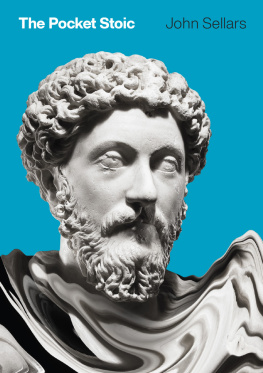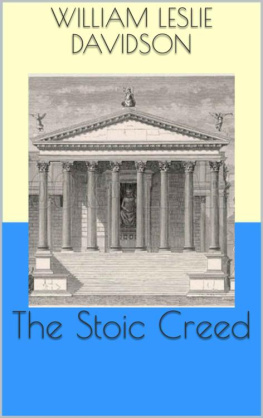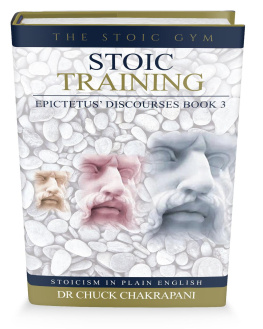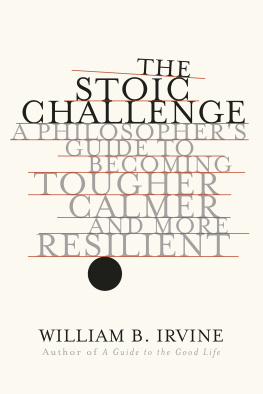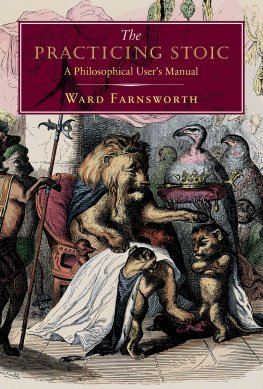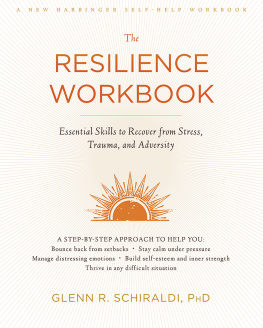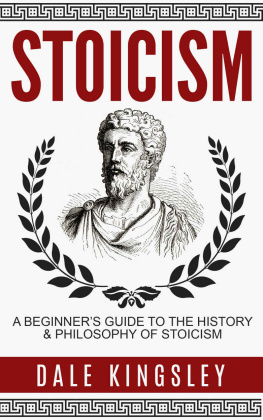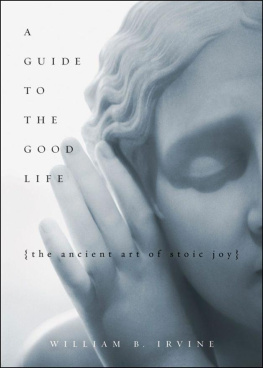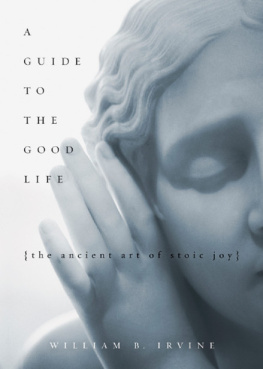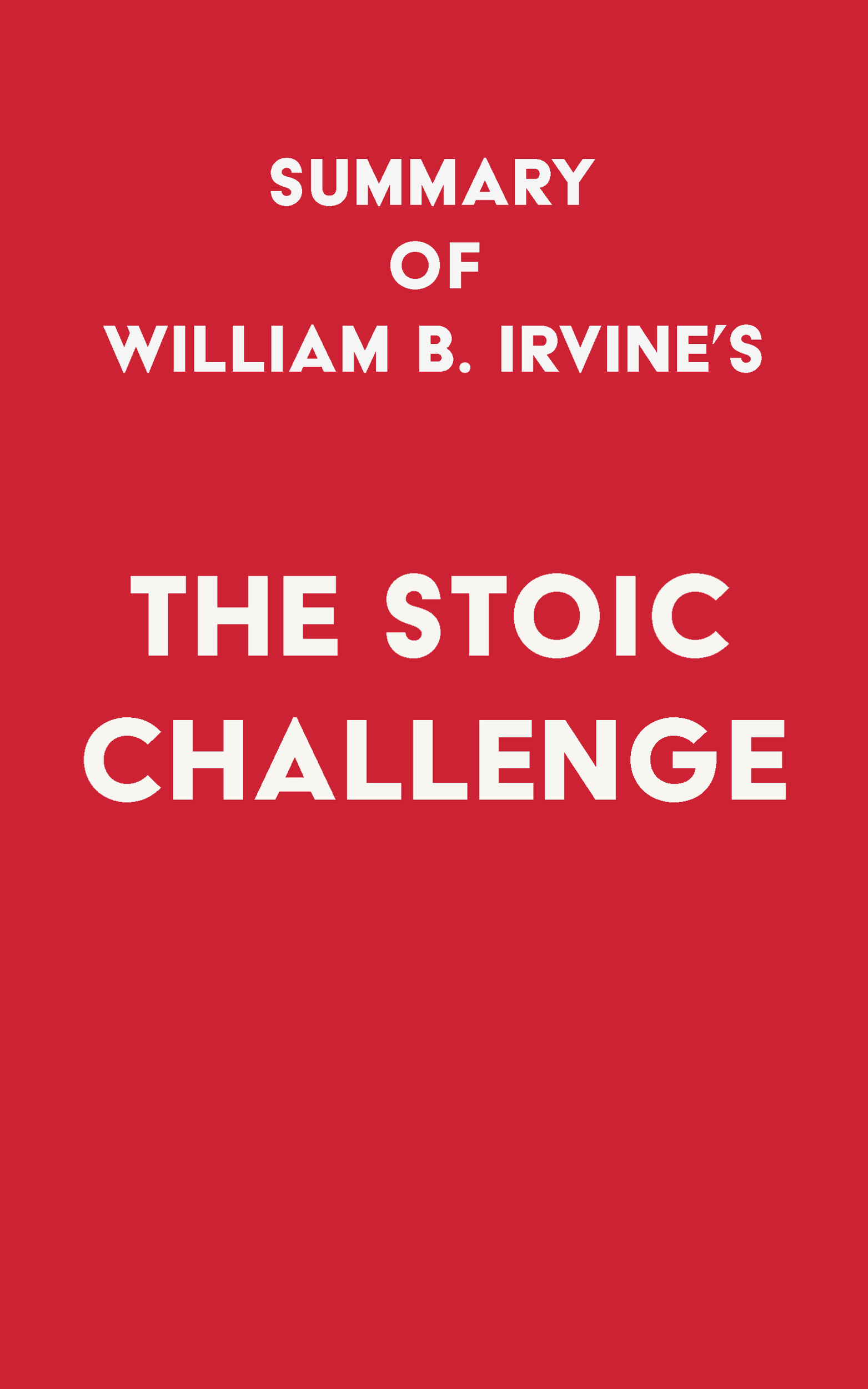Swift Reads
Summary of William B. Irvines The Stoic Challenge
First published by Swift Books LLC 2021
Copyright 2021 by Swift Reads
All rights reserved. No part of this publication may be reproduced, stored or transmitted in any form or by any means, electronic, mechanical, photocopying, recording, scanning, or otherwise without written permission from the publisher. It is illegal to copy this book, post it to a website, or distribute it by any other means without permission.
First edition
This book was professionally typeset on Reedsy
Find out more at reedsy.com
Overview
If Stoicism were summarized in one command, it would be: stop worrying about things that are out of your control. If that sounds like something you agree with, then you should dive deeper into Stoicism.
It does sound a lot easier said than done. We often worry about things we know we cant control, yet we cant help it. It wouldnt be a challenge if it were easy. In William B. Irvins The Stoic Challenge (2019), discover what ancient philosophers thought about overcoming lifes obstacles. Though Stoicism has its roots in ancient Greece, its wisdom still applies to modern life.
The Stoic strategy can help you transform the setbacks in your life and view them as opportunities for becoming calmer, tougher, more courageous, and more resilient.
Insights from Introduction and Part 1
#1
The Stoics believed that we have the ability to be flexible in our reactions to adversity.
#2
They discovered that when we view setbacks as tests of our character instead of misfortunes, were able to dramatically change our emotional response to them, and develop the ability to stay calm in the face of adversity.
#3
The only thing we can control is our response to adversity. We dont have control over what happens to us, but we do have control over how we respond to it.
#4
The Stoics were not emotionless. They were just much less emotional than most people. They tried to minimize their negative emotions and maximize their positive emotions.
#5
The Stoics thought that in order to be a good person, you have to be able to see things as they really are, not as you might wish them to be.
#6
Sometimes, even when everything is going well, something unexpected happens. It can happen at work, at home, or while you are traveling. Something you thought was going to happen doesnt happen. You have to come up with a new plan.
#7
Stoicism is a philosophy that teaches you how to deal with things that are out of your control. If you lose your job, you can still be happy. If you get cancer, you can still be happy. Stoicism is about learning to be happy, no matter what happens.
#8
The Stoics thought that we can reduce the emotional cost of setbacks by using the test strategy. The idea is that we should treat setbacks as a test of our resilience and resourcefulness, as if they were designed by Stoic gods to challenge us.
#9
Even though we are not in control of the world, we can still make a difference. The way to do this is to improve ourselves. We do this by learning from our mistakes, and by learning from the mistakes of others.
#10
Different people respond to setbacks differently. Some are very sensitive to setbacks. Even a minor one will have a big impact on their emotional state. They feel helpless and defeated, and play the victim. Others, however, take setbacks as a learning opportunity.
#11
When we get angry, we have two options: we can express our anger or suppress it. If we suppress it, it might take root in us and enter a kind of dormant state, only to spring back to life later. Its best to express our anger so we can let go of it then and there.
#12
All of us experience setbacks. Even the most celebrated geniuses of all time had setbacks in their lives that people can study and learn from.
#13
In the face of setbacks, we can ask: How can I turn this setback into an opportunity? How can I turn this setback into a stepping stone?
#14
Resilience is the ability to bounce back from adversity. Resilient people are not defeated by adversity. They are not despondent after a setback. They do not feel sorry for themselves. Instead, they take setbacks in stride, as part of life. They are able to deal with them, and move on.
#15
The best response to adversity is to accept it philosophically, without complaining, then try to turn the adversity into an opportunity, by finding a way to gain something good from it.
#16
The Stoics believed that injustice was rampant in the Roman Empire, and that many people suffered from it. They also believed that they could and should do something about it.
#17
It is safer to be a victim than to be a hero, because if you are a victim, you can blame someone else for your problems. If you are a hero, you have to take responsibility for your own life.
#18
Resilience is a skill, like riding a bike or speaking a foreign language, that you develop with practice.
Insights from Part 2
#1
You are a divided being, as you have both a body and a mind. Your mind is divided into a conscious and a subconscious component. Because of the front-and-center nature of your conscious mind, you are thoroughly familiar with its operations. The same cannot be said of your subconscious mind.
#2
When you have a setback, your subconscious mind tries to figure out why, and tends to blame someone else for it. It also tends to make you feel like youve been wronged. Your emotions then join in and start shouting at the person your subconscious mind is blaming.
#3
The ancient Stoics believed that life is a series of tests, where the gods test your ability to deal with adversity.
#4
The Stoics realized that people tend to be irrational when they are in the grip of strong emotions. They are likely to make bad decisions, and they might even do dangerous things.
#5
We can use the power of our minds to change how we feel, even if our external circumstances dont change.
#6
Ancient Stoics were way ahead of modern psychologists. They used the anchoring effect to have a more fulfilling life. They would periodically imagine how their lives could be worse. This would make them feel grateful for what they had.
#7
By thinking about how things could be worse, Stoics effectively sank an anchor into their subconscious minds even if they didnt think of it in modern psychological terms. They realized that we often take things for granted, and so its a good idea to imagine ourselves without them.
#8
You dont have to be a genius to practice negative visualization. You can do it in a few seconds, anywhere, and at no cost. Its amazing that such a powerful technique is so easy to learn.
#9
Anchoring is a cognitive bias that causes us to use the first piece of information we learn about a subject to form an opinion. Then we stick with that opinion even when we learn more, because the first piece of information is still anchored in our minds.
#10
One technique we can use to deal with adversity is the comedic frame, which means making a joke about the situation. Many psychologists believe that using this technique helps us deal better with the hardest and saddest situations.
#11
By comically framing a damaging situation, we can prevent it from harming us emotionally, and this is important to do, since the emotional harm we experience in the aftermath can far outweigh the physical harm.


